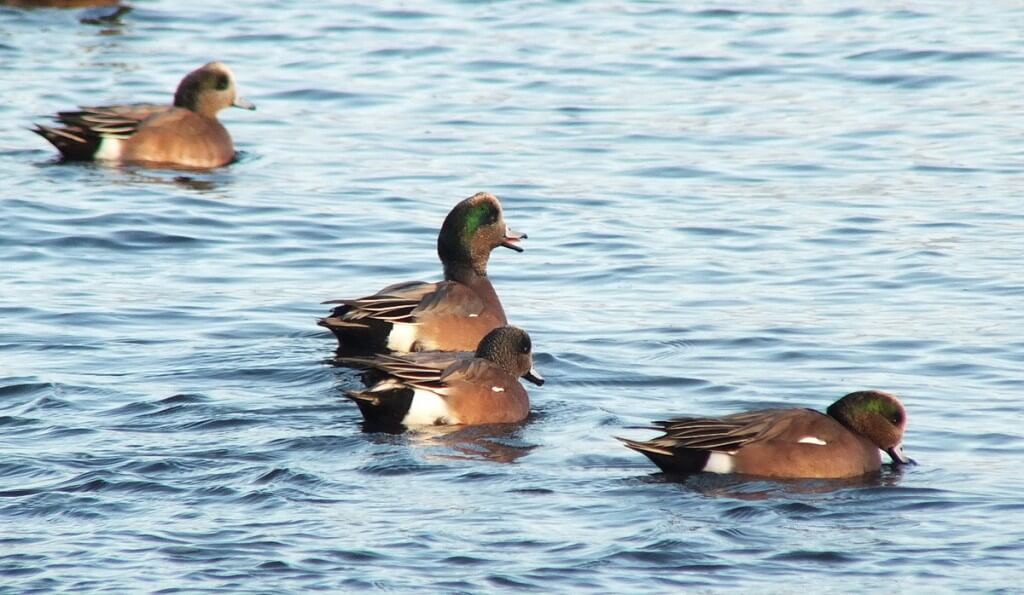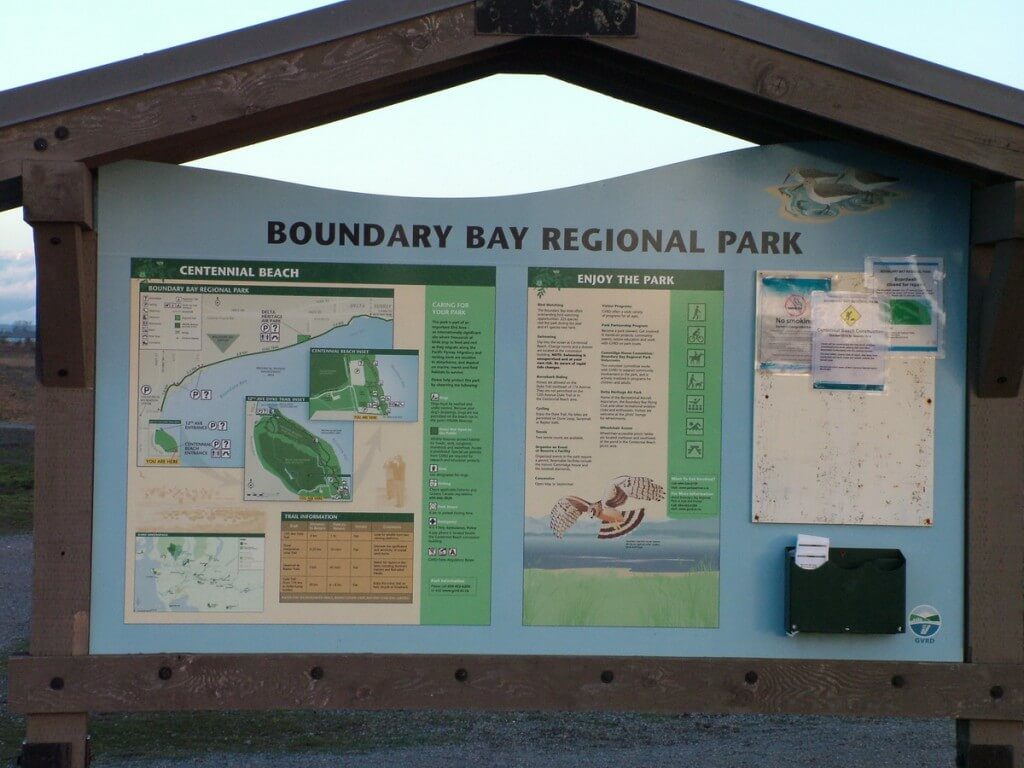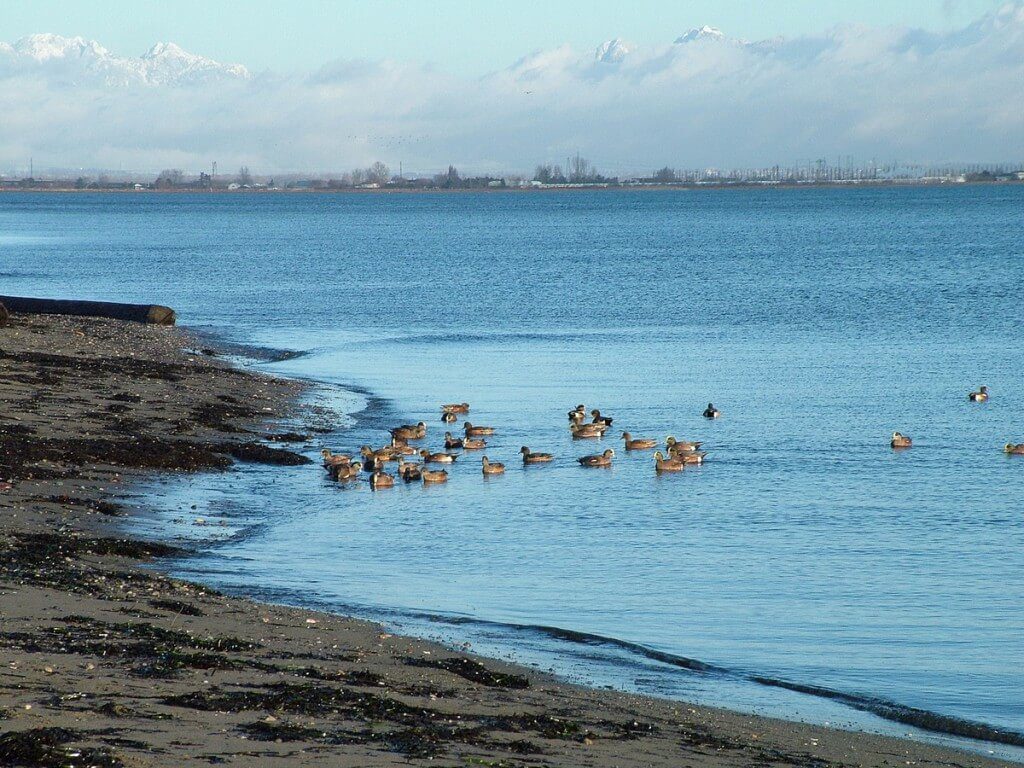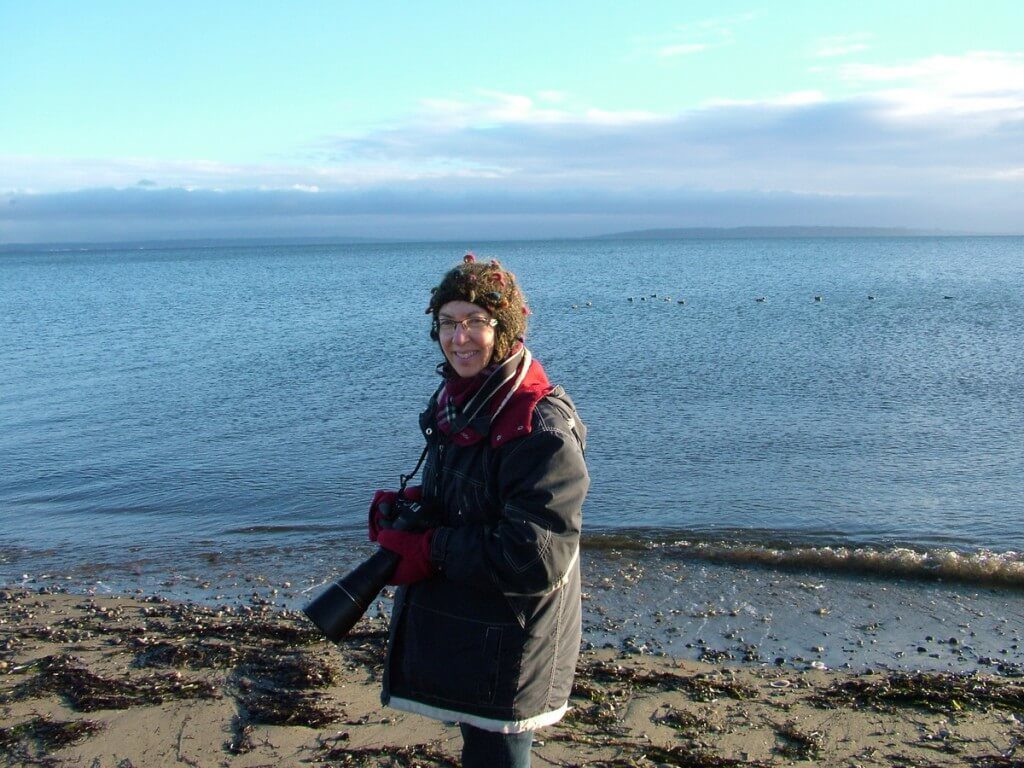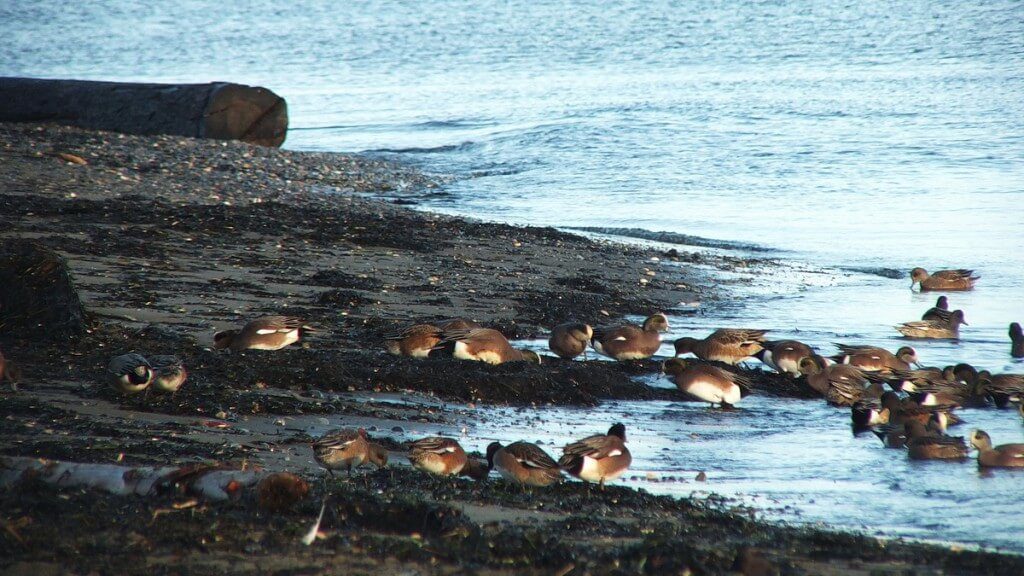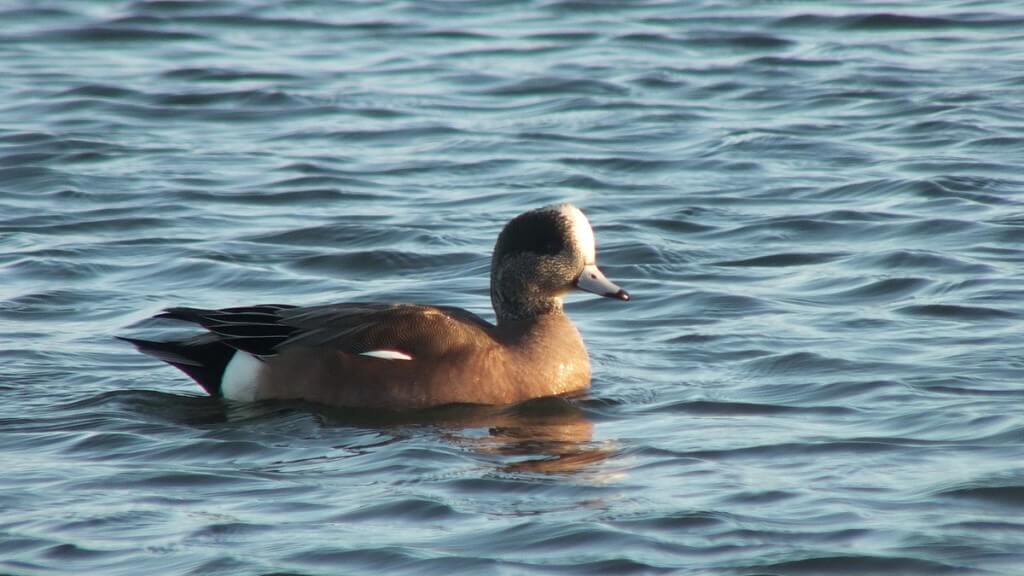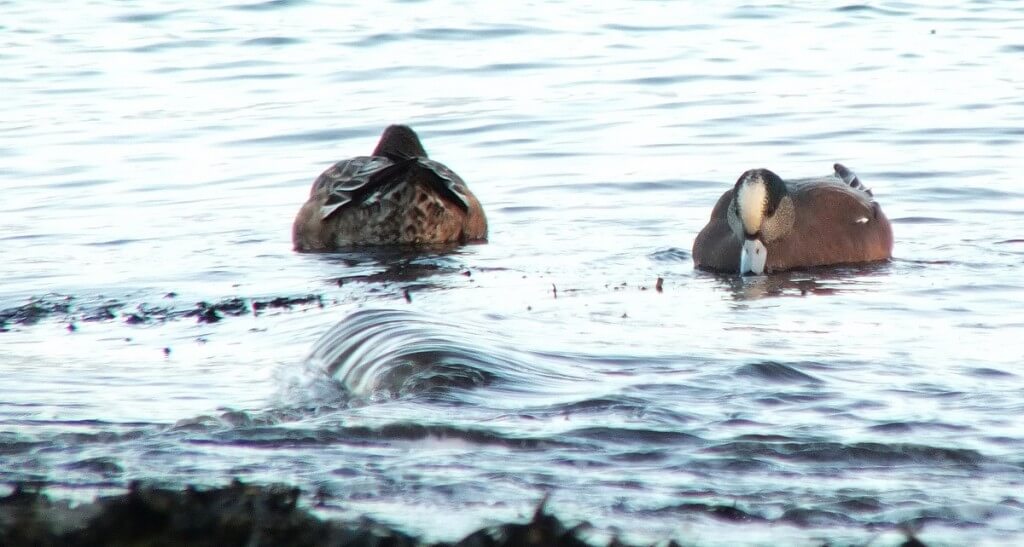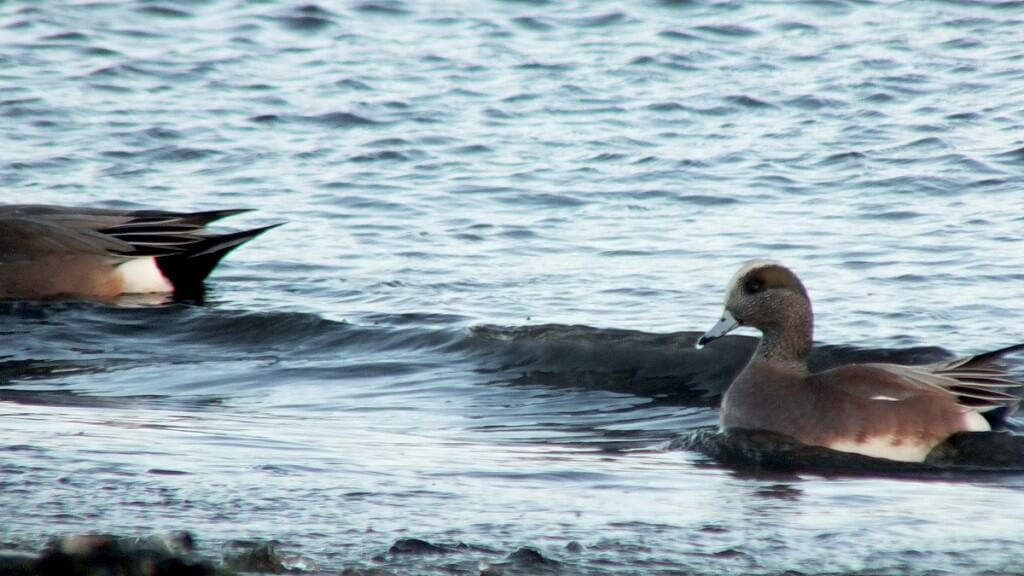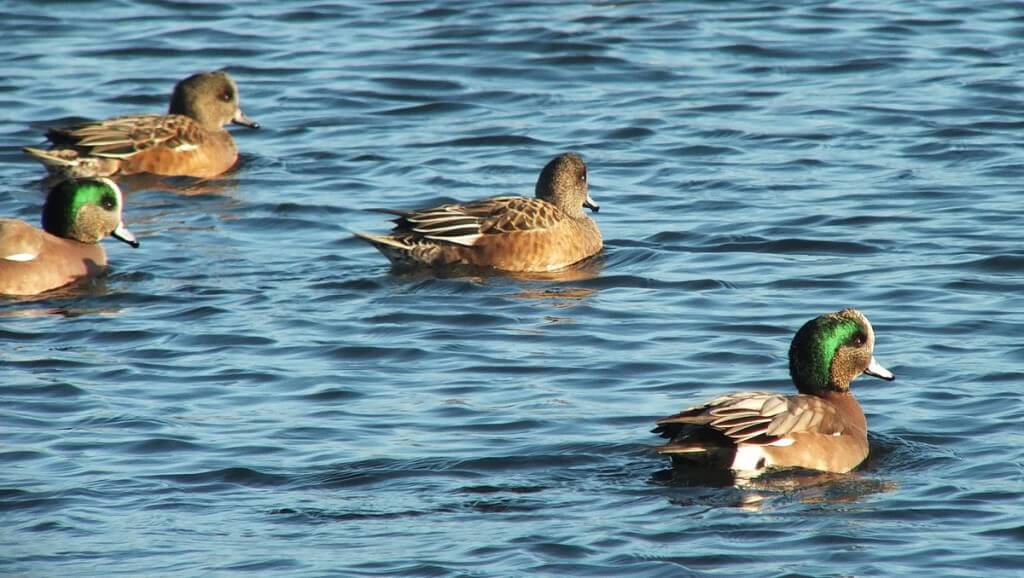American Wigeon Ducks At Boundary Bay
Bob and I were keen to visit Boundary Bay Regional Park near Vancouver, British Columbia because, from my home in Ontario, I have monitored, for the past couple of years, bird sightings at that particular location. Recognized as a major preserve for migratory birds there on the Pacific Flyway, our hopes were high for spotting some species of waterfowl uncommon in our own locale. We were not disappointed when, adjacent to Centennial Beach, we spotted a raft of American Wigeon ducks.
Boundary Bay encompasses both the Fraser River Estuary and the Georgia Strait/Puget Sound making for an ecosystem that is capable of supporting more than 333 species of birds. During annual migration, Boundary Bay and the surrounding area of Delta is an important stopping point for over five million migratory birds.
Although the first week of January does not seem like the best time of year to go birdwatching at Boundary Bay, it just happened to coincide with a visit to relatives who live on Vancouver Island. Still, considerable numbers of ducks wintering in the shallow coastal bay provided lots of subject matter for our photographic, and birding ambitions.
Our walk began at the northern end of the nature preserve, so by the time we reached Centennial Beach, the sun had risen above the horizon and was now behind our backs as we headed back along the shoreline. Despite a brisk onshore breeze, the climate was still a welcome change from that left behind at home. There, a severe Arctic vortex held Ontario in its grip. It was the longest and severest cold snap to hit Ontario in decades.
It didn’t take long before the ducks landed on shore and afforded us a slightly closer look, but they are a species known for its shy personality. Being very wary birds, they will take flight in an instant if disturbed. When becoming airborne en masse, their distinctive calls fill the air with the male ducks, the drakes, emitting a pleasing, mellow wheezy whistle, while the females, the hens, produce hoarse grunts and quacks. American Widgeons are highly sociable outside of breeding season and often group together in large flocks.
A former name for the American Wigeon ducks was Baldpate because the white stripe on the head of the male resembles a bald man’s head. The cream-coloured cap runs from the bill, up the forehead and over the crown of its head. An adult female has a creamy coloured head and neck, heavily streaked with dusky markings.
American Wigeon ducks can be distinguished from other species of dabbling ducks by their round head, short neck and small bill.
The greyish-blue bill with the black tip is specially structured to enable the duck to exert great force at the tip of the bill. This improves the bird’s ability to dislodge and/or pluck vegetation from the water or seabed. This capability makes American Wigeon ducks the most vegetarian of dabbling ducks. As much as 97-100% of their diet is composed of plant material during non-breeding times of the year.
American Wigeons practice another feeding habit that sets them apart from other dabbling ducks and that is their opportunistic behaviour. They often tag along behind diving birds and will wait on the surface of the water to snatch up pieces of vegetation brought to the surface by the other waterfowl. This has gained them the nickname poacher or robber ducks.
As Bob and I loitered on the sandy beach, lulled by the gentle surge of the waves, we were delighted when the early morning sunshine caught the mask of green feathers on each drake. The broad green patch extending from each eye to the nape of the neck became highly iridescent, revealing the beauty of the males’ breeding plumage. They are very striking birds.
Frame To Frame – Bob and Jean

